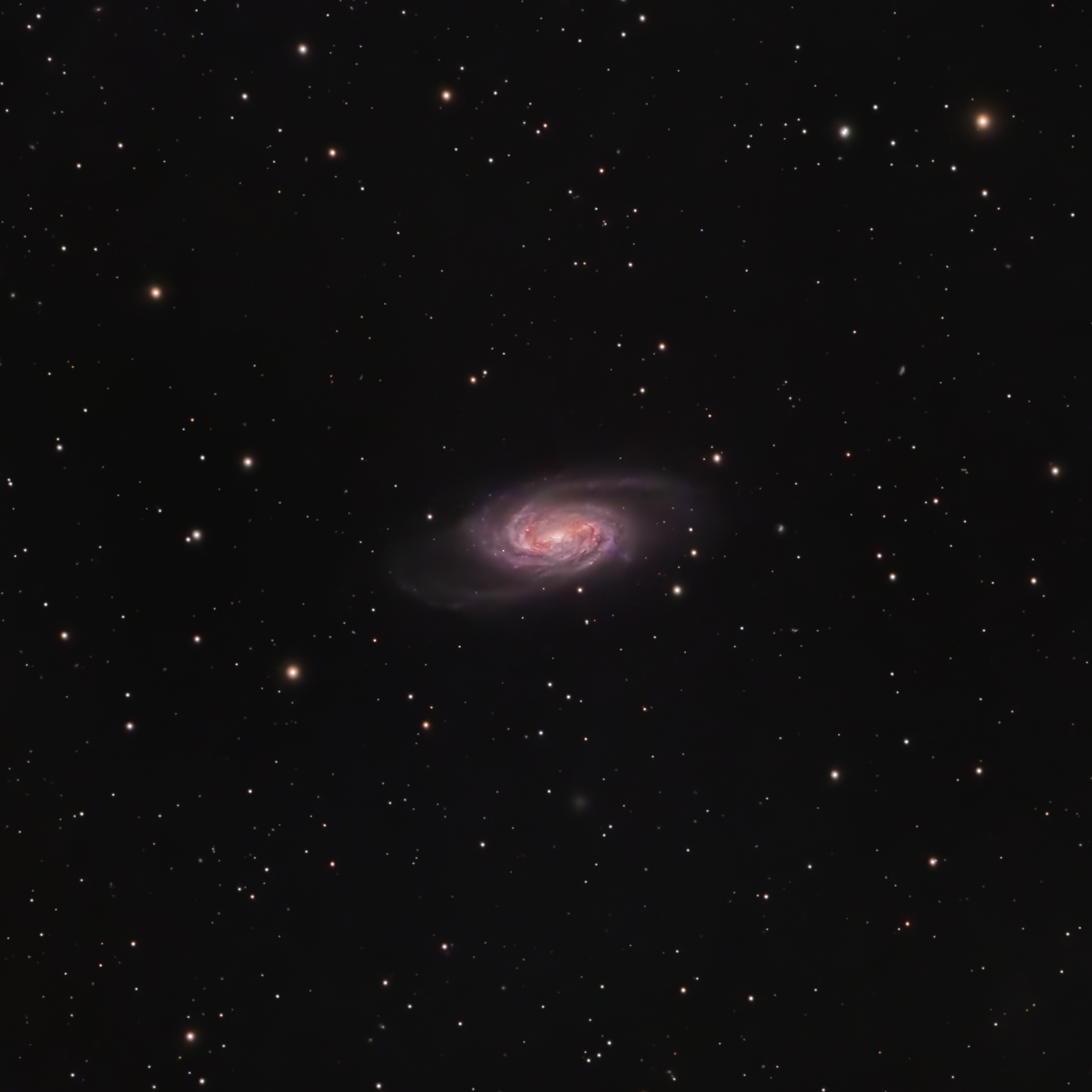NGC 2903, along with NGC 2403, is one galaxy that officially begins galaxy season. Galaxy season (which runs from April to June) may be the hardest time of year for somebody who lives in a light-polluted area. You can’t do narrow-band imaging on galaxies, so filtering out bortle 9 light pollution in New Jersey is not happening. The best I can do is shoot on a moonless night, which helps bring down the level of extraneous light between me and the galaxy. To image galaxies, I purchased a 1:1 field flattener for my AstroTech 115EDT, which gives me the full 805 mm to image galaxies like NGC 2903. The bigger issue was that without the flattener/reducer, the telescope was at f7, which meant 1.5x more imaging time than with the reducer/flattener, which was f5.6.
Shooting NGC 2903
I put about 6 hours into imaging this galaxy. I’m giving up only because of the limited time I have for galaxy season and this target is not a priority for me. It was the first galaxy that I could image; it was small, and it made an excellent test for my new 1:1 Hotech field flattener. But, it’s April now and M81 and M82 are making their debut in my backyard, and I’d rather be imaging them than NGC 2903.
As for the results of the image, it could use a lot more luminance than it currently has. It’s blurry and noisy and more luminance data could have made those shortcomings more manageable. I shot as much luminance as I did RGB. There are 3 hours of RGB data and 3 hours of luminance. If I added another 3–5 hours of luminance to this, I know this would have been better. But–I’d rather spend that extra 3–5 hours on M81/M82.
Processing NGC 2903 Galaxy in Pixinsight
As far as processing, here is a quick breakdown of my steps in Pixinsight & Photoshop, which differed from how I process a nebula. There was a new learning curve as I haven’t processed a galaxy since the Andromeda Galaxy last summer. An additional step for me I never used for nebulas was the Image Solver script and the Spectrophotometric Color Calibration.
Linear
- Dynamic Crop on L, R, G, B channels
- Dynamic Background Extraction on L, R, G, B channels
- Channel Combination for RGB
- Blur Xterminator on combined RGB image
- Blur Xterminator on L image
- Scripts > Image Analysis > Image Solver to add information for the next step, Spectrophotometric Color Calibration
- Spectrophotometric Color Calibration on RGB image
- Noise Xterminator on both RGB and L images
- Masked Stretch on RGB and L images
Non-Linear
- Auto Histogram to make sure the RGB and L images are the same brightness level
- LRGB Combine adding the L channel to the RGB
- Curves Transformation—adding contrast
- Curves Transformation—increase saturation
- Scripts > EZ Denoise
Photoshop
- Levels Adjustment
- Vibrance Adjustment
- Camera Raw Adjustments
- Selective Color Adjustment
Well, it was nice knowing you, NGC 2903. Maybe I’ll revisit you and gather more data if the season proves full of cloudless and moonless nights. But we all have our priorities and you just weren’t one of them. 😥
